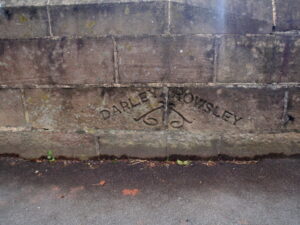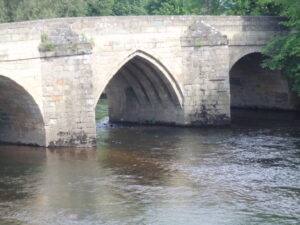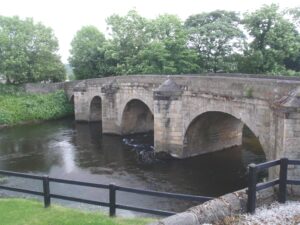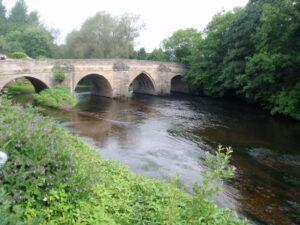Darley Bridge
Darley Bridge was an important packhorse route crossing of the River Derwent. There was a packhorse route from here up to Beeley Moor via Darley Dale. As with many other river crossings the bridge was widened to cater for increased traffic. See Cromford Bridge. On the South East side one of the original pointed arches and the ribbed construction of the bridge can easily be seen.
A reference to this bridge appears in 1504, again in 1666 and in 1682 when mention of seven arches is made. So it is possible two arches may be hidden beneath the present approaches.
Not far to the north of the bridge at Darley Dale is Church Lane; in 1635 it was known as Ghost Lane after a Scottish pedlar was murdered there. Ghost stories about murdered Scottish pedlars come from Darley Dale, Hayfield and Eyam wakes. Pedlars tended to be called Scottish only because they sold cheap Scottish linen.
its original sign above the windows can still be seen.
Potters Cottage with a plaque above the front door to ‘Jonathan and Alice Potter 1763′ is Grade II listed
Outside the Square and Compass inn is a boundary marker for the Urban District of North Darley and South Darley. Although these districts were recorded between 1639 and 1644, the stone is much later. The earliest reference of the Square and Compass is 1735 when Robert Clayton built the original building on his marriage to Elizabeth Sherwyn. Today, a stone with his initials dated 1735 can be seen on the facade of the building.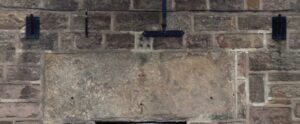
The boundary marker was originally on the middle of the bridge (the middle of the river is the boundary between North and South Darley. It was removed during the war and later found by the publicans, lying in overgrown land nearby and that’s when it was stood up by the pub.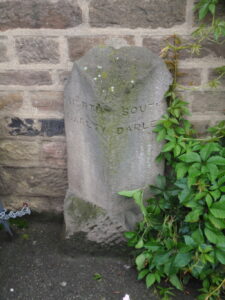 Rivers were often used as natural boundaries and another example can be seen on the bridge at Rowsley.
Rivers were often used as natural boundaries and another example can be seen on the bridge at Rowsley.